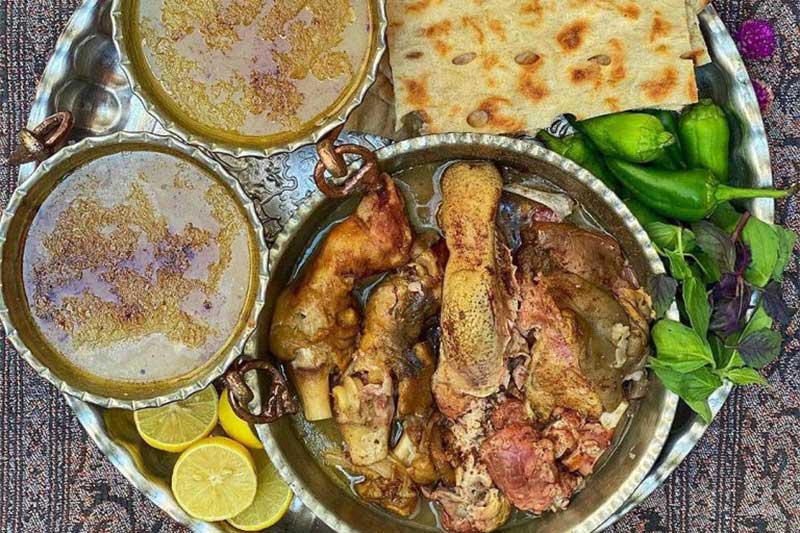Kale Pache, which literally means [sheep] head and trotter in Persian, is cooked in different countries almost in the same way. It is prepared by cooking the head, arms, legs and the inner organs of the sheep (or calf). It includes the tongue, brain, eyes, head’s flesh and trotters of the sheep.
According to Iranian medicine experts, people with acute and dry cough and those with hemorrhoids who have a good digestive tract can use Kalle-pache with vinegar, honey and cinnamon.
However, people suffering from heart disease and diabetic patients should not eat this food.
It takes a lot of time to cook Kale Pache, and in Iran it is usually served in certain restaurants called Kalle-pazi or Tabbakhi.
It is usually served in the morning and is especially consumed during cold seasons.
Read More: Strange Iranian Dishes One Must Try before Death
Recipe for Kale Pache plus add-ons:
The first stage in the cooking process is to trim the sheep head and trotters. Clean them well and pound the head hard on a surface so that the mucus and other waste inside the sheep’s nasal passage are completely out.
You can use a brush to clean the teeth. Use heat to burn the very tiny hair on the sheep head and then remove them using a knife.
Then wash the sheep head again so that black color fully fades away and leave it to dry. Now dice the onions and put them inside a big pot.
Second stage:
Here, you should add some oil to the onions and fry them until they get lighter. Next, grate the garlics and add them to the pot. Let the garlics fry for about two minutes and emit their fragrance. It is time to add some ginger, cinnamon sticks, black pepper, and turmeric to the pot and let them fry for one minute. Then add the sheep head and totters to the pot slowly.
Third stage:
In this stage, add some water to the pot to the level that it covers the ingredients. Add some lime juice and turn up the flame to the maximum level for it to start boiling sooner. When it reaches the boiling level, remove the foam from over the top of the liquid. This improves the taste and smell. Then, turn down the heat to the lowest level possible.
Fourth stage:
Give it eight hours to get cooked slowly and generate oil. At the same time, add peas to a container and soak them in water for some time.
Fifth stage:
Two hours toward the end of the cooking process, strain the peas and add them to the main pot. Next, add salt and remove the cinnamon sticks.
When the Kale Pache is well done, remove the broth, pass it through a strainer, return it inside the pot, and let the ingredients get cooked for another 20 minutes.
Final stage:
Separate the oil created over the broth using a ladle and pour it inside a small pot with some cinnamon powder before boiling it with the stove flame turned up.
How to serve the Kale Pache
Now we move the pot from over the heat. Then, we trim the head and trotters and pour them on a big platter.
Then we pour the Kale Pache broth into a bowl, and we add a mixture of oil and cinnamon to each bowl.
Additionally, we serve fresh Sangak bread, vegetables, and lemon with the Kale Pache.
Frequently asked questions
1. How can you cook Kale Pache with a pressure cooker?
First, we put the head and trotters together with the other ingredients mentioned above into the pressure cooker, then we put the cap firmly in place and put it on the stove. It will be ready in two hours.
If, however, you would like to get a taste of the real stuff, make sure to cook traditionally.
2. How can you trim the sheep brain?
Remember that inside the sheep’s brain, there is an inedible gland, which you should remove after preparing the Kale Pache. The sheep brain has a soft texture so you can easily find the gland using your hand.
